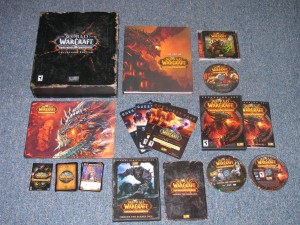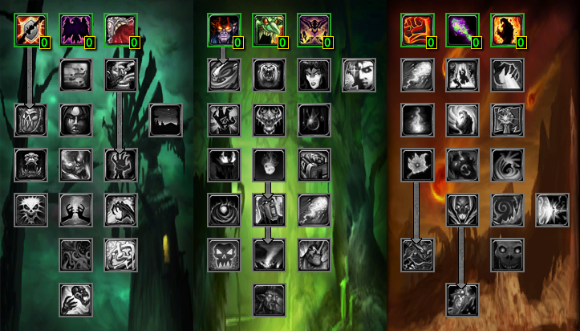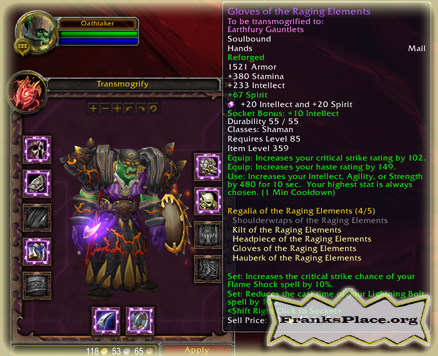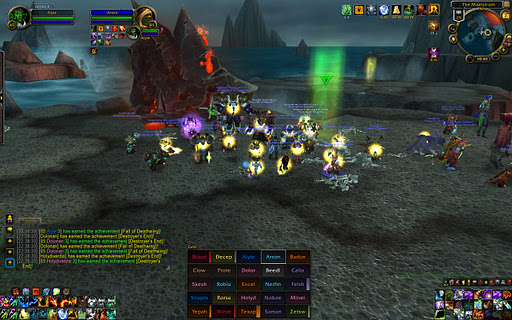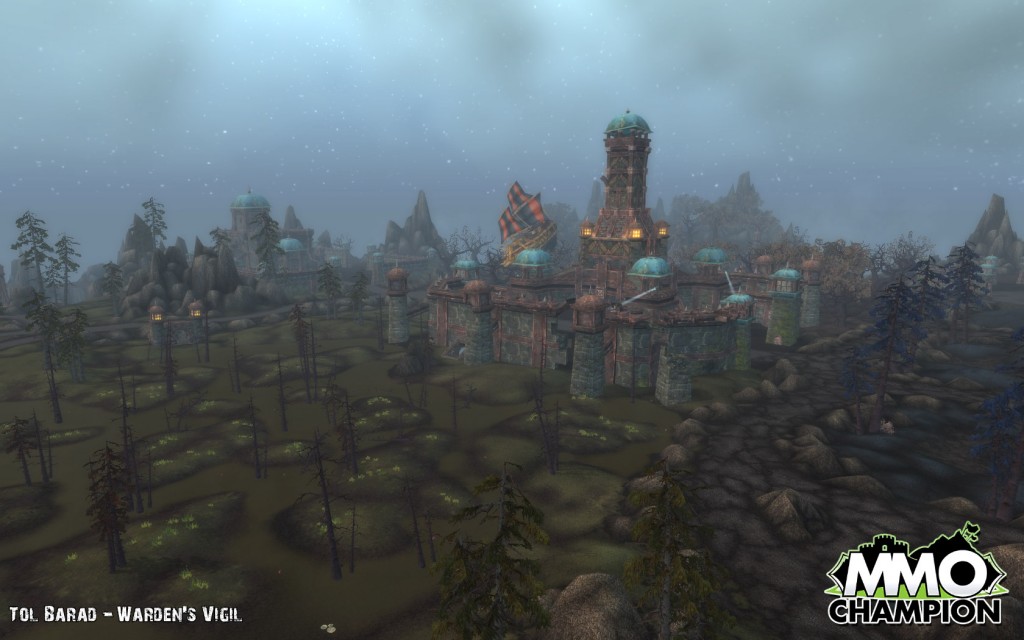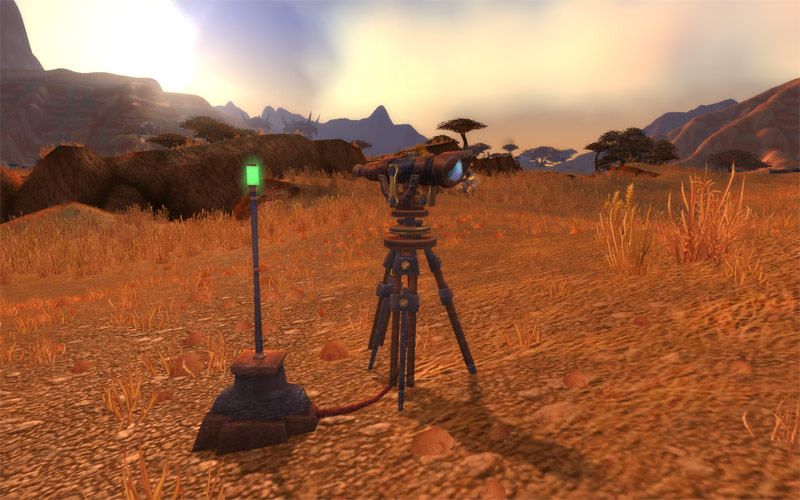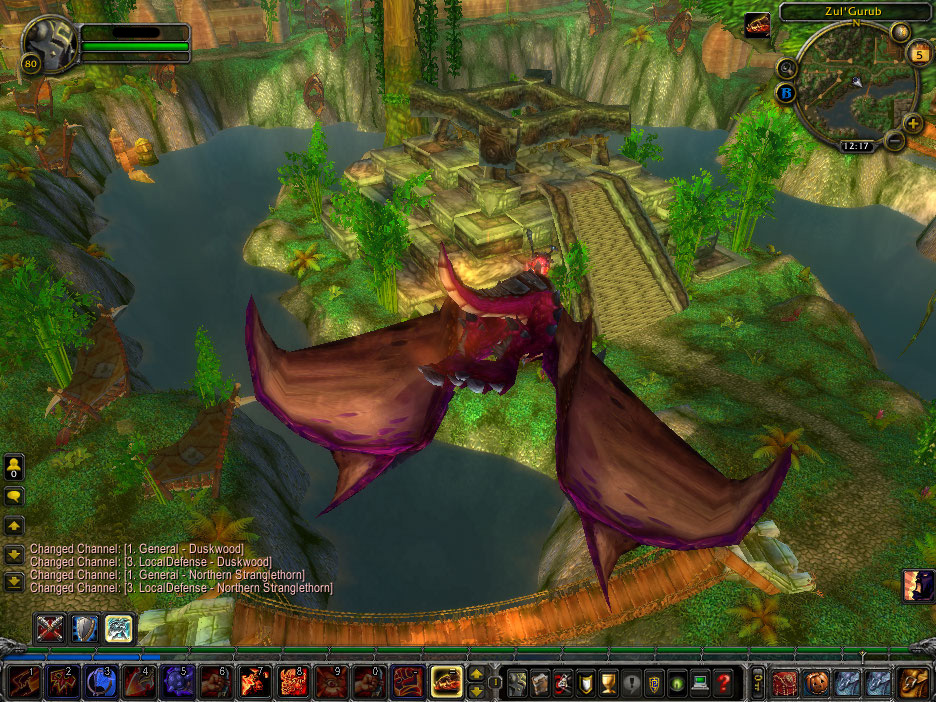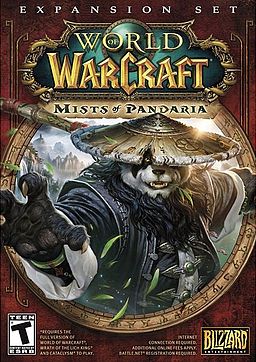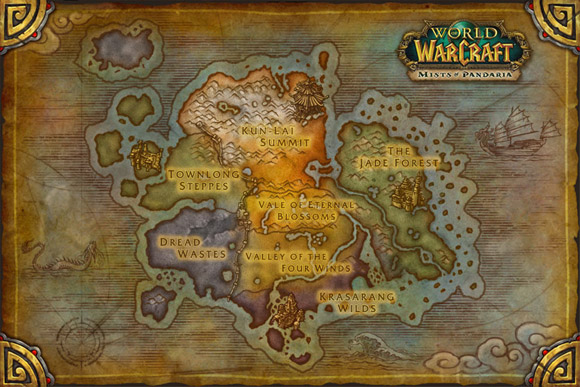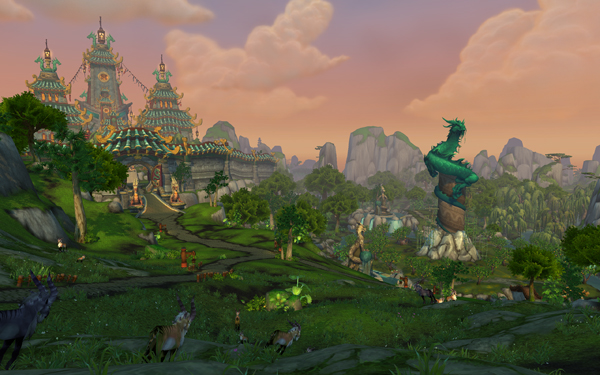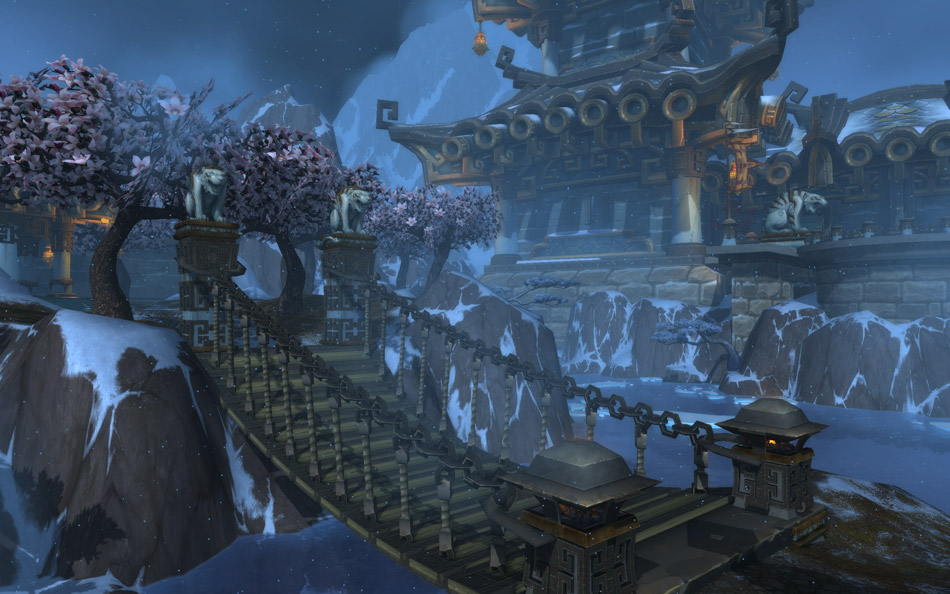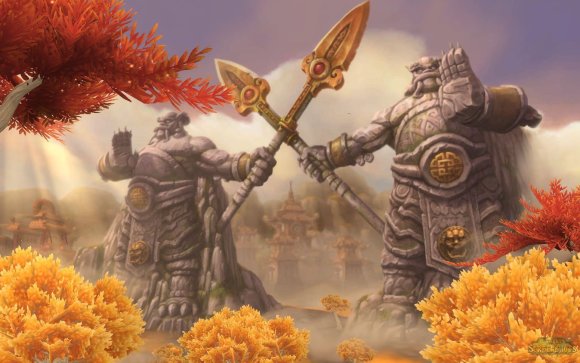For the record, like many others, I stopped playing during the last six months of Lich King (who needed to run ICC more than 20-30 times?) and came back for Cataclysm. I discovered what is now my least favorite era of WOW.
Getting There
I didn’t even like leveling in Cataclysm. The zones were boring. I hated Vashj’ir for it’s annoying 3D travel and vast size. The others were just uninspired. Only Uldum was decent.
The Big Distraction
I suspect that the designers blew their wad on the giant world revamp. Every zone in Azeroth got an update, some quite dramatic, and all of the quests were redone. But I never saw any of this — except flying overhead. With four toons from 60-80, I wasn’t about to go level a new one. I didn’t even try out the new starting zones (Goblin and Worgen, although I heard they were good). If Worgen had been Horde (like they should), I might have tried them.
Talent’s Last Stand
The talent trees got another huge overhaul, but this time instead of adding 5 new talent points, Blizzard took away 30! Level 85 characters had 41 talents, which wasn’t so bad except it reduced the emotional reward given at each level. Still, I understand how the prospect of 76 points could be overwhelming from a design and user standpoint. More substantially, Blizzard introduced a more formal choice of specialization. Instead of merely investing points in various trees, you had to pick your preferred tree. Along with this came certain mutually exclusive abilities and resources.
On the plus side, this allowed the designers the freedom to work on the specs in more isolation without having to place signature spec abilities deep into the trees. By Pandaria, it allowed even greater differentiation of specs. On the minus, this change continued a trend toward homogenization. There was a feeling under the old system, even if illusionary, that you could create an interesting hybrid between two specs. No more.
Reforging to Sameness
A number of gearing innovations were introduced with Cataclysm. In the BC and LK eras, the number of affixes (different stats and attributes possible on gear) had expanded considerably. The game has a lot of gear specs: plate tanks, plate dps, plate healing, mail spell dps, mail melee, mail ranged, mail healing, leather healing, leather spell dps, leather melee, leather tanking, cloth healing and cloth dps. In the old days, the designers ignored some, like bear tanks, but with making every spec viable came the need to provide them gear.
With Cataclysm, the designers tried to reduce this gear proliferation and consolidate stats. For example, the new “mastery” stat, basically good for every spec, but does something different for each. It might improve healing for a Holy Priest and damage for a Shadow Priest.
To make more gear useful to more players Blizzard introduced the reforging vendor. This allowed players to exchange one secondary stat on an item for another secondary stat. For example, if you had an item with crit and mastery, but want more haste, you could take half the mastery off and turn it into haste. This was reversible and modifiable.
This allowed almost any gear that fit your basic spec to be adjusted to fit your overall itemization. The downside was that it made gear increasingly by the numbers. Individual items used to matter more. You sought out the Azuresong Mageblade or the Core Hound Tooth. After Cataclysm, if the item had a higher ilevel (item level) and fit your spec at all, it was likely better. This meant that you stopped caring so much about the individualitem and its stats and more about its ilevel.
The End of the Silhouette
Vanilla, BC, and LK WOW never allowed the modification of gear appearance. Other games had dyes and methods of cosmetic alteration, but in WOW, the gear actually looked good, and because each class had unique tier gear, it was usually possible at a glance to tell how good (or at least dedicated) a player was. In fact, when I first started playing I was really impressed by the way your character slowly improved visually. At first, you dressed in rags, and slowly but surely you got cooler looking (with a few setbacks). I, like most players, chose function over form, and sometimes had a patchwork appearance.
Cataclysmchanged all that by introducing Transmogrification. The transmorg vendor, would for a fee, make any piece of gear look like any other of the same type that you owned (i.e. you couldn’t make a bow look like a sword). Suddenly, your best gear was disconnected from your best-looking gear. The cool part of this was that old gear, which often looked very cool or nostalgic, was useful again as a template for appearance. It also allowed characters to construct unified thematic sets without compromising function. Negatively, the specific new gear you got became even less memorable. It was just ilevel and stats.
Normal Mode is Back
Cataclysm about faced the dungeon difficulty trend from LK. Normal mode level 85 dungeons had some challenge, and Heroics had a new key: gear level. You couldn’t enter them (via the Dungeon Finder) without having a certain gear level. This meant you actually had to run the normal ones. Which was good.
They weren’t really that hard and they had some decent gear. Plus, each faction had a tabard you could wear to gather reputation. Two of these dungeons were favorite Vanilladungeons that got a refresh and new level 85 modes: Shadow Fang Keep and Dead Mines.
The Return of CC
Heroic difficulty was another matter. While Cataclysm Heroic’s weren’t as brutal as BC Heroics, they were actually kinda difficult. They often required a bit of crowd control (CC) and knowledge of boss strategies. Again, not anywhere near that from the BC and Vanilla era, but a lot harder than in LK.
In guild runs, this was no probably and actually quite fun. But the problem was that most people didn’t run dungeons in guild groups, they used the Dungeon Finder. Heroics with the Dungeon Finder became torture. They were just a bit too hard for most random groups. They required you know the fight. Many good players reacted to this by dropping group as soon as anything went wrong. This happened prior to the Dungeon Finder, but social factors kept it more in check. Now, one wipe and your best player or two fled, leaving you to replace them by random chance.
At the time, I thought my problem was that after facerolling dungeons in LK, it was hard to go back to a challenge, but I think it had as much to do with the interaction of the Dungeon Finder. Pugs with no invested social connection are not well geared to face and learn to overcome challenges.
Justice/Valor Points
The badge system reached more or less final form: which wasn’t badges at all, but points. Instead of a constantly expanding collection of currencies, Blizzard converted the badges into two types of points (presumably the badge->point thing was for better granularity) and instituted several policies. With the release of new tiers, any remaining currency in the better currency (Valor) was converted into the lesser (Justice). Old Valor Gear was then made available for Justice Points. New gear went into the Valor Vendor. You earned Justice via dungeons (easy) and Valor by dailies and raiding (harder). Both currencies gained a weekly cap to discourage hardcore players from grinding out too much at once.
Blizzard experimented with different methods of Valor awards for non-raiders: first Heroic completed of the day, then up to 7 Heroics per week. The later was designed to remove the “need” to run one Heroic every day, but somehow turned out to discourage running as many of them.
This latest evolution worked well. Valor gear was very good, and could be purchased approximately one item every two weeks (if you maxed out your weekly cap). There was too little Justice Gear. For single spec classes (like my Warlock) the currency was useless after about two weeks — until a new tier landed a bunch of formerly top gear in the Justice Vendor. For non-raiders, Valor points were too hard to cap.
Guild Loyalty
Another successful new system was the expansion of the guild system. With Cataclysm, guilds as an entity gained reputation, levels, achievements, perks and more. Doing “work” (quests, dungeons, profession work, etc) started earning you reputation with your guild and the guild itself experience. The guild could then level up, earning members various guild perks. Certain achievements could open up guild rewards. The perks and rewards were actually pretty sweet although not usually related to performance per-se. Things like: faster running while dead, shorter hearth teleport timer, 10% more reputation, and a mass resurrection spell.
Overall, the system felt rewarding. You definitely wanted to be in a guild, and one that was pretty high level at that. The speed of leveling was reasonable and worked even for my tiny and fairly inactive guild.
Reputation Redux
Cataclysm‘s end game reputation grinds kept me occupied for a few weeks. There were some decent epic items and a few cool mounts. Most reputations had some dailies to help them along, or there were always dungeon runs. But they didn’t last forever, after about a month, I pretty much maxed them all out.
PVP + Dailies, oh my
Blizzard tried world PVP for a fourth time with Tol Barad. It was a lot like Wintergrasp, including the same kind of loot piñata boss. I felt obligated to run the boss once a week, but couldn’t have cared less about the PVP.
It also had a PVE rep and hub with a whole bunch of dailies. This was a pretty extensive 2-3 week grind-a-thon but awarded a couple of worthwhile things at exalted. Then it was done.
Archeology Fail
Instead of adding yet another crafting profession, like BC and LK, Cataclysm added a fourth optional profession all players could train: archeology. This turned out to be a rather boring, albeit, time consuming distraction. Making you travel is a time-proven form of cheap WOW gameplay (lots of holidays feature “tour the world” activities). Theoretically, Archeology could earn you cool items, but at launch it did so in a maddeningly tedious fashion.
Raiding as Usual
My guild fell apart at the end of LK and my new one consisted of mostly casual players, so I didn’t raid much at all during Cataclysm. I suffered from near burnout and never mustered the energy to try pugging anything or finding a raiding guild.
About a month after the expansion shipped I ran out of any way to progress my character without raiding. So I stopped playing.
Trolls again?
A few months in, Blizzard added two new 5 man dungeons with better gear. But I’d seen them both before: the troll raids Zul’Gurub and Zul’Aman, just repurposed as 5 man dungeons. I tried a couple of times to run them, but they suffered from the same problem (as the Heroics) of pug wipes.
I stopped playing one more time.
Molten Front
Blizzard tried again with the Molten Front, a new raid (I didn’t try it) and a daily quest hub and reputation. I ground out rep for a week or two and grew bored.
I stopped again, and didn’t return until Pandaria.
Gone for Good?
Without a raiding guild, the majority of endgame progression was unavailable. Sure, I could have continued mindlessly running the same dungeons to gather valor points, but what was the point of getting new better gear if I wasn’t facing any new encounters? I just didn’t feel motivated. This time around, I didn’t bother with alts, the boring 80-85 zones put me off.
Late in the expansion, Blizzard introduced the Raid Finder, an attempt to do for raids what the Dungeon Finder did for dungeons. I never tried it out, but it’s possible, probable even that had this been around at Cataclysm launch, I would have played longer and had more to do.
But as it was, Cataclysm suffered from a diffuse focus spread throughout the world, frustrating Heroic pugs, over homogenization, and a general lack of newness. Had I played too long? Or was it the content itself?
I assumed it was me… until Mists of Pandaria…
| WOW Endgame series: Vanilla, Burning Crusade, Lich King, Cataclysm, and Pandaria. or read about Mists of Pandaria leveling. Latest hot post: Reaper of Souls Analysis! If you liked this post, follow me at: My novels: The Darkening Dream and Untimed |

